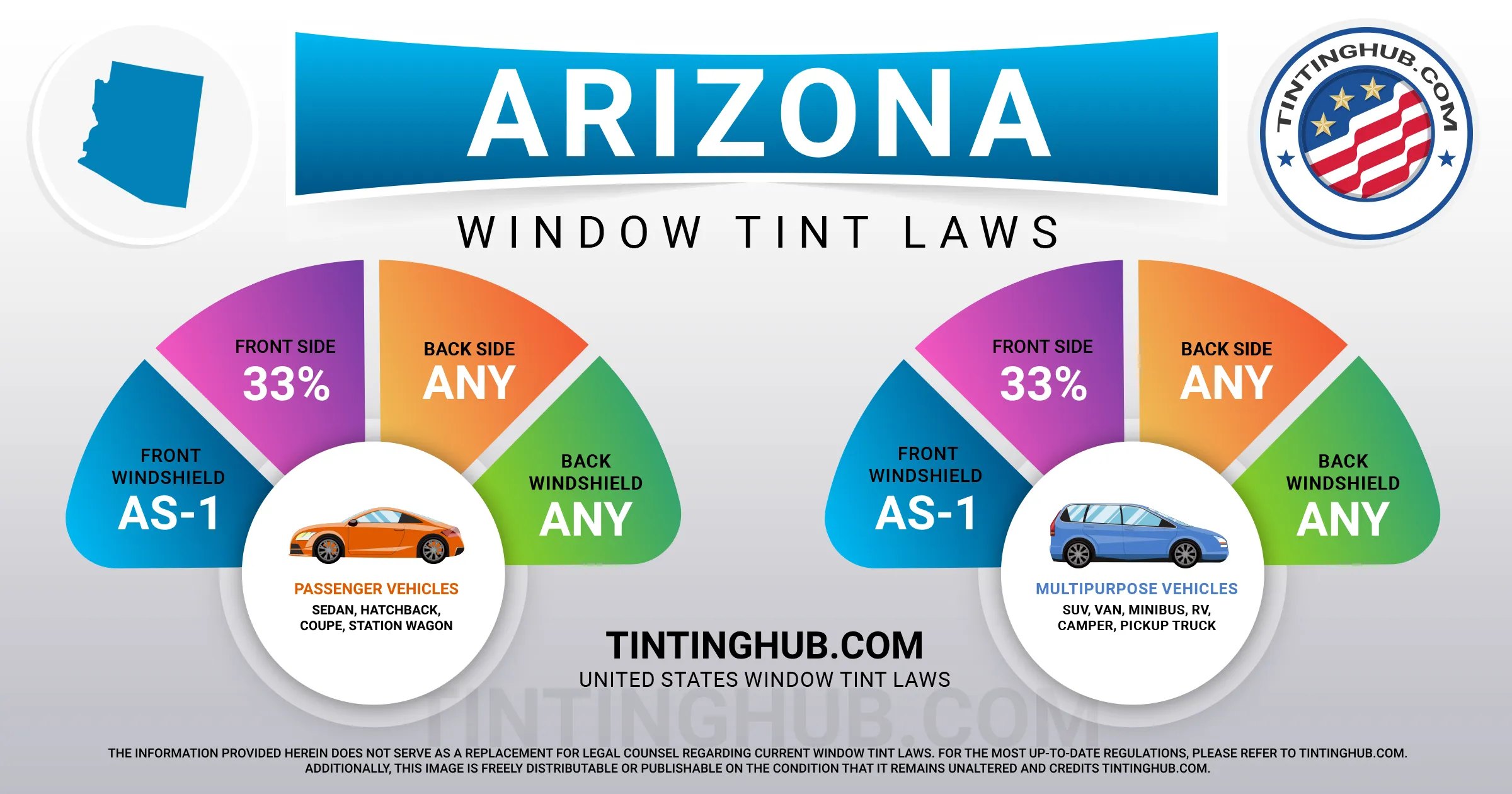Car window tinting regulations in the vibrant state of Arizona have been in place since 1994. Understanding the specifics of these laws is crucial for car owners. In this article, we’ll provide you with a comprehensive overview of Arizona’s car window tint regulations, including tint darkness, reflection, and additional rules.

Window Tint Darkness in Arizona
When it comes to car window tinting, it’s all about the Visible Light Transmission (VLT) percentage. This percentage determines the amount of visible light allowed through your car windows. However, the VLT requirements are different for sedan cars and SUVs or vans.
Tint Darkness for Sedans
- Windshield: Non-reflective tint is allowed, but only above the manufacturer’s AS-1 line.
- Front Side windows: These windows must allow more than 33% of light in.
- Back Side windows: You have the freedom to choose any level of darkness.
- Rear Window: Similar to the back side windows, you can opt for any level of darkness.
Tint Darkness for SUVs and Vans
- Windshield: Non-reflective tint is permitted above the manufacturer’s AS-1 line.
- Front Side windows: The requirement is the same as for sedans; they must allow more than 33% of light in.
- Back Side windows: Similar to sedans, there are no restrictions on darkness.
- Rear Window: You can tint it to your preference.
Window Tint Reflection in Arizona
Window tint serves not only to control darkness but also to reduce glare and heat. Arizona’s window tint laws include specific regulations regarding window reflection.
Tint Reflection for Sedans and SUVs
- Front Side windows: The tint on these windows must not exceed 35% reflectivity.
- Back Side windows: Like the front side windows, these must also not be more than 35% reflective.
Other Arizona Window Tint Regulations
Apart from tint darkness and reflection, Arizona has other important rules and regulations related to window tinting:
Side Mirrors
If your back window is tinted, you are required to have dual side mirrors for enhanced visibility and safety.
Restricted Colors
The state of Arizona prohibits the use of red and amber tint colors, ensuring that only safe and legal colors are used for window tint.
Certificates
Unlike some states, Arizona does not require film manufacturers to certify the film they sell. This makes it essential to choose a trusted and reliable source for your window tint needs.
Stickers
Arizona law does not mandate the use of stickers to identify legal tinting. However, it’s advisable to keep a record of your tint’s specifications for reference.
Medical Exceptions
Arizona allows medical exemptions for special tint. If you believe you qualify for such an exemption, make sure to review the specific terms with your state law to ensure compliance.
Please keep in mind that interpretations of Arizona’s tinting laws and regulations may vary depending on your county or place of residence. For the most accurate and up-to-date information, we recommend consulting your local DMV or law enforcement authorities.
Conclusion
In conclusion, being aware of Arizona’s car window tinting laws is vital for all vehicle owners. The regulations governing tint darkness, reflection, and additional rules are in place to ensure road safety and compliance with the law. Our information on window tint laws in Arizona is up to date as of 2024. If you ever come across any outdated or incorrect information, please don’t hesitate to contact us, and we’ll promptly rectify it. We take pride in being a trusted industry leader, providing accurate and reliable information on window tint laws to help you stay compliant and make informed decisions.